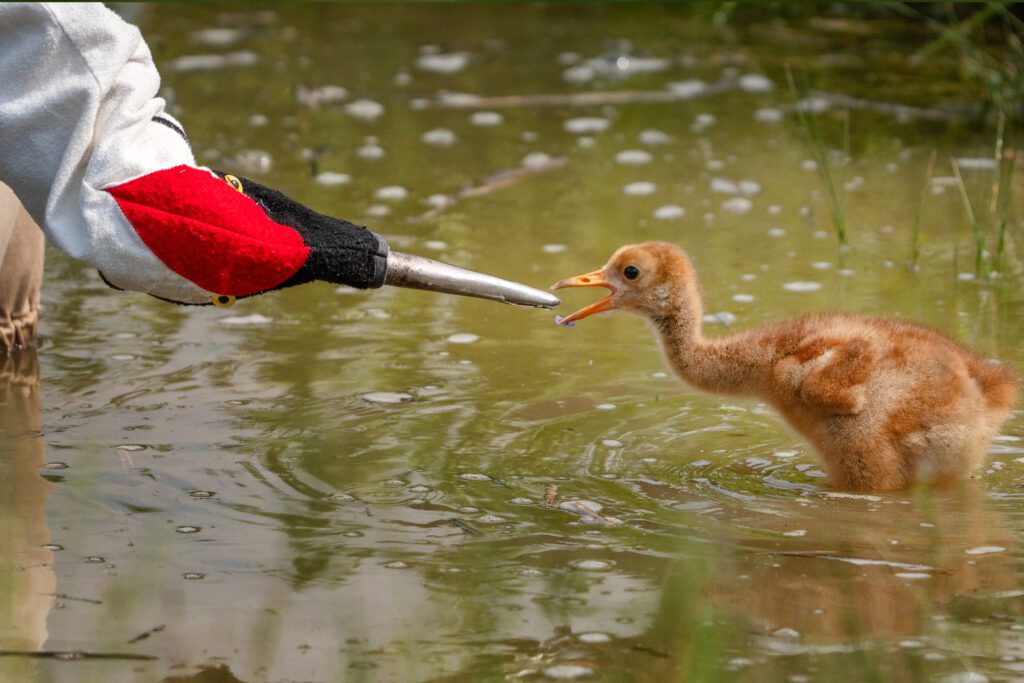Exploring Changes in the Eastern Sandhill Crane Population
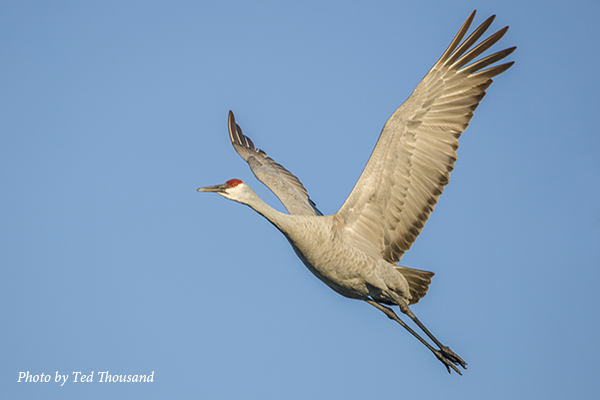 Have you noticed Sandhill Cranes are wintering further north? Read more about our research and explore the data in our NEW interactive map.
Have you noticed Sandhill Cranes are wintering further north? Read more about our research and explore the data in our NEW interactive map.
Research Team: Anne Lacy, Jeb Barzen, Dorn Moore and Kristin Norris
Data visualization: Dorn Moore, Jim Cunningham and Randy Garcia
In 2015, I worked with fellow researchers at the International Crane Foundation to publish a paper in the Journal of Field Ornithology titled “Changes in the number and distribution of Greater Sandhill Cranes in the Eastern Population” (download the original article). We used data from annual bird surveys to explore the substantial changes in the Sandhill Crane population size and distribution from 1966 to 2013.
For the winter analysis, we used data from the National Audubon Society’s Christmas Bird Count. Volunteers count birds as part of the Christmas Bird Count between Dec. 14 and Jan. 5 each year. These data are used by researchers to help understand changes in bird populations. Our data analysis revealed major increases in the number of Sandhill Cranes in the eastern population and significant changes in the timing and distribution of cranes during their winter migration.
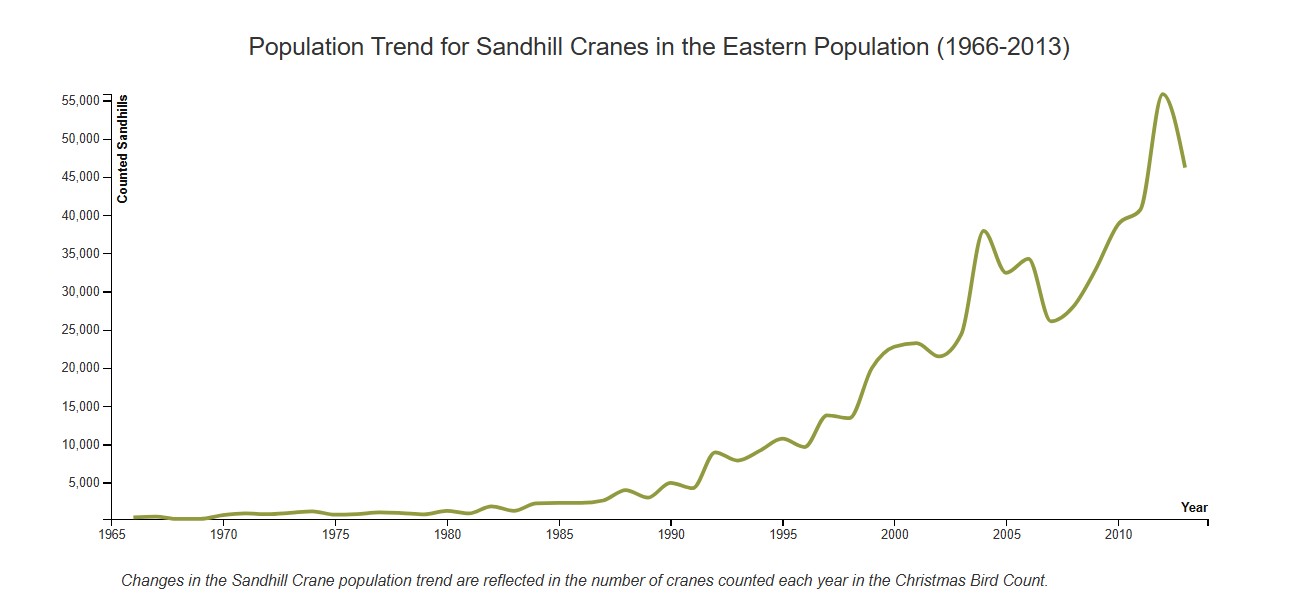
The majority of Sandhill Cranes within the eastern population spend their summer/breeding months in or north of Michigan, Wisconsin and Minnesota. The data visualization below helps explore the changes in numbers of cranes from 1966 to 2013 and changes in the distribution of the cranes during the Christmas Bird Count. It is easy to see the northward shift in the distribution of Sandhill Cranes and also how they spread to areas along the gulf coast and the eastern seaboard.
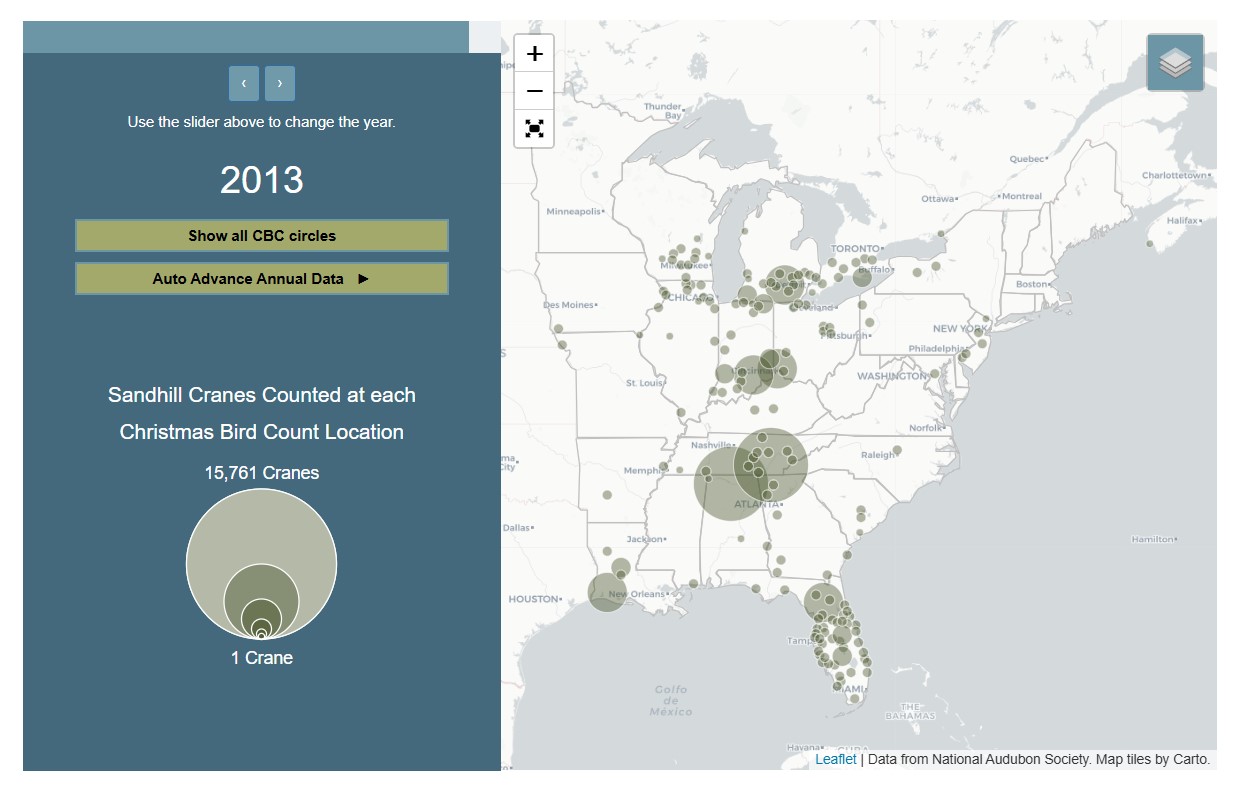
Although these data do not necessarily reflect the ultimate wintering areas for Sandhill Cranes in the region, they do reflect changes in the areas that will still support cranes as winter arrives. Sandhill Cranes are very cold tolerant. Many of them will wait to migrate until open water for roosting and feeding areas have frozen over completely. The research team documented a significant northern shift in the average latitude of the eastern population at the Christmas Bird Count each year. The chart below shows this northward shift and the broadening range of latitudes where Sandhill Cranes are wintering each year.
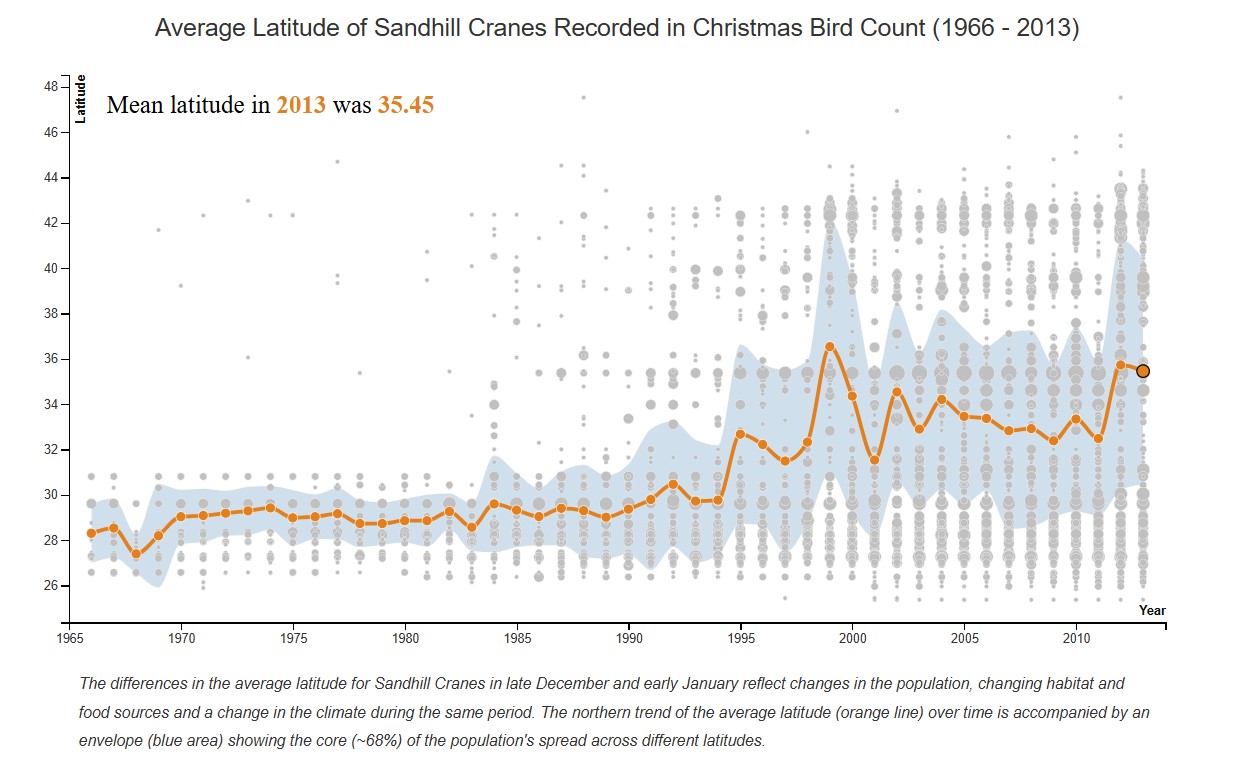
What does this mean for the future? Sandhill Cranes in the eastern United States may continue to winter further north and remain in more northerly areas later in the fall before migrating further south. Factors such as annual weather variations, long-term climate change, and changes in our land use may all interact to produce these changing patterns. The next time you see Sandhill Cranes, take a moment to consider what they may be telling us about our changing landscapes.
 Story submitted by Dorn Moore, Geospatial & Information Services Manager. Click here to learn more about our work in North America.
Story submitted by Dorn Moore, Geospatial & Information Services Manager. Click here to learn more about our work in North America.


